Top Destinations Along the Silk Road in China
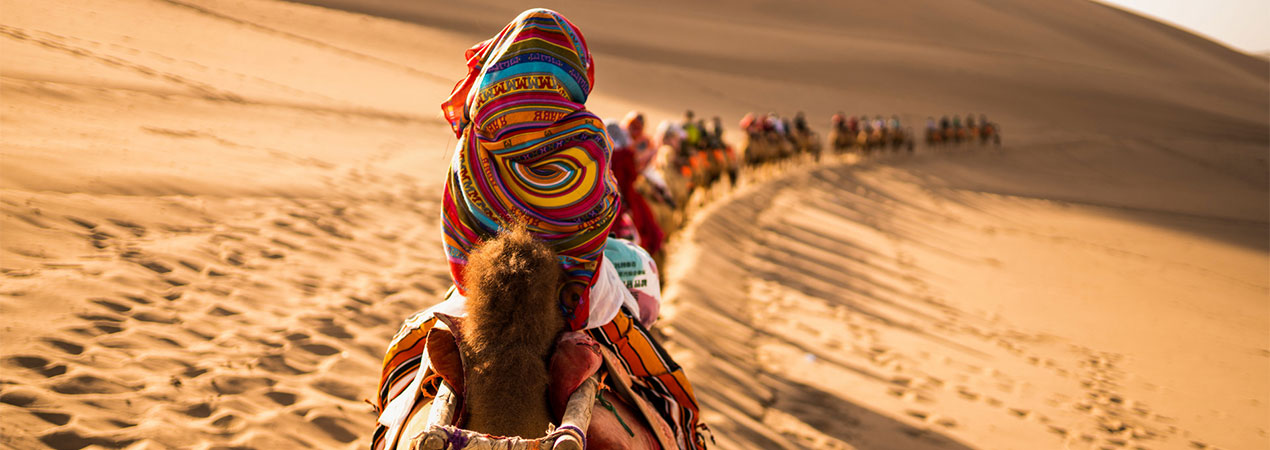
Sericulture (or silk farming), according to Chinese legend, was developed sometime around the year 2,700 BCE. Regarded as an extremely high value product, silk was reserved for the exclusive usage of the Chinese imperial court for the making of clothes, drapes, banners, and other items of prestige. Its production technique was a fiercely guarded secret within China for some 3,000 years, with imperial decrees sentencing to death anyone who revealed to a foreigner the process of its production. Legend has it that Byzantine Emperor Justinian desperately wanted to produce his own silk. In 550, he sent two monks to China with the secret mission. The spies were lucky enough to smuggle out silkworm eggs in a hollow bamboo cane. Soon afterwards silk production started in the vicinity of Constantinople. The secret that had been so heavily guarded for 3,000 years was uncovered.
Established when the Han Dynasty in China officially opened trade with the West in 130 B.C.E, the Silk Road routes remained in use until 1453 C.E., when the Ottoman Empire boycotted trade with China and closed them. For more than 1,500 years, the network of routes contributed to the exchange of goods and ideas among diverse cultures. Merchants carried silk and porcelain from China to Europe, where it was welcomed by royalty and wealthy patrons. In exchange, horses, glassware, textiles, and manufactured goods traveled eastward. It is hard to overstate the importance of the Silk Road on history. Buddhism entered China through this route and influenced all aspects of our life. Towns along the route grew into multicultural cities. We can still find a lot of cultural relics in the cities along the route. We have included all the highlights that you can still visit or experience along the route in our article below.
1. Xi’an (pronunciation: shee-AHN)
Xi’an is the eastern terminus of the Silk Road. It served as imperial capital city for 13 dynasties. That makes Xi’an the best place to learn the history of China. The museum which houses 2000 year old Terracotta Warriors is only 37.5 km (23.4miles) from Xi’an city center. You can have a chance to make a Terra-cotta Figurine on your own in a workshop near the museum.
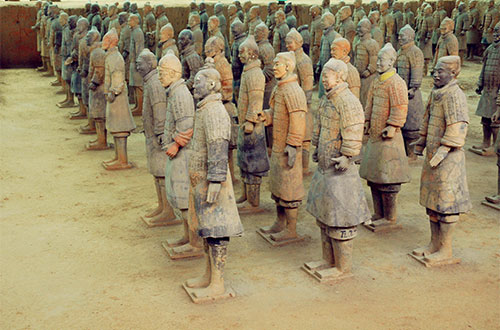
Hua Shan is known as the 'most precipitous mountain under heaven' because of its steep carved pathways and the long drops that often surround them. The most infamous path, the 'plank road in the sky', takes walkers out on rickety wooden beams supported only by steel posts drilled directly into the sheer cliff face below. In Xi’an you can also find the best preserved ancient city wall in China. At 12 meters high and 15 meters wide, the 14-kilometer-long Xi'an’s Ancient City wall was first built in 1370 C E, and to give you an idea of how old the city wall is, the Forbidden City in Beijing was finished in 1420 CE.
For a food adventurer, Muslim Street in the Muslim Quarter cannot be missed; it is a street where you can find all kinds of delicious and mouthwatering local Chinese dishes. Go with an empty stomach and try everything you can…
2. Tianshui
Tianshui is thought to be the birthplace of two legendary Chinese figures, Fuxi and Nuwa. Fuxi was a demigod credited with the invention of Bagua (Eight Diagrams), hunting, fishing and the domestication of animals. Nuwa, his wife, was a goddess who created mankind and used stones to patch the holes in the sky caused by the God of Water. You can visit the temple which is dedicated to Fuxi.
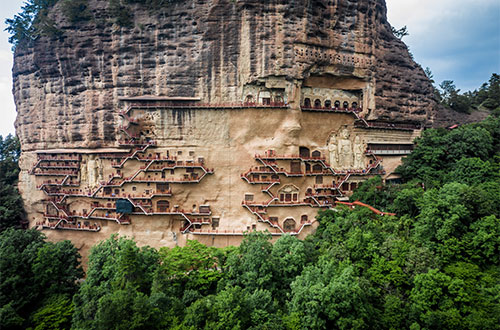
Maijishan Buddhist Caves
Tianshui is home to the Maijishan Buddhist caves. Known as the “Gallery of Sculptures from the East”, the sculptures and murals housed in the Maijishan caves provide us with an understanding of Chinese sculptures, paintings, and architecture, as well as tracing the development of Buddhism.
If you are an aficionado of archaeology, Dadiwan Archeological Museum cannot be missed. The site has a history ranging from 4,800 to 8,000 years. You can witness the most ancient Chinese paintings, specimens of crops, painted pottery, characters of Chinese language, concrete ground floor, and Chinese palatial architecture. When you are in Tianshui, make sure to taste Guagua, a noodle-like snack made of buckwheat. It is a savory breakfast dish for local people.
3. Lanzhou
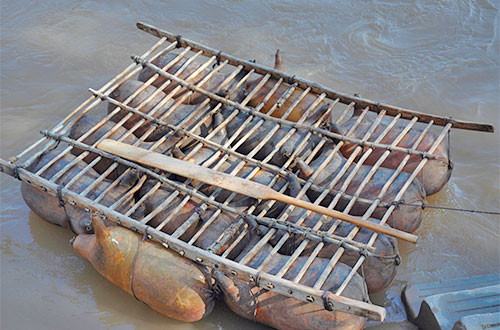
the Sheepskin Raft
Located on the shores of the Yellow River, Lanzhou was a major city on the Silk Road, where it was known as the Jincheng (Golden City) before 583 CE. It acquired its present name during the Sui Dynasty in 583 CE. It was a cultural melting pot as it had been inhabited by more than 20 ethnic groups, including Qiang, Rong, Tibetan, Han and the Huns. Different ethnic groups took turns to control it from the 1st century to the 14th century. Buddhism spread to other areas in China through the Silk Road, so you’ll find a lot of Buddhist grottoes near Lanzhou; the Bingling Temple Grottoes is one of the best among them. It hangs on a Jishi Hill cliff in the upper reaches of Liujiaxia Dam. Originally engraved in the year 420 CE, the grottoes frequently changed names. Finally, during the Ming Dynasty (1368 - 1644), its name became Bingling, which in Tibetan means ten thousand Buddhas. If you are a fan of Tibetan cultures, Labrang Monastery (Labuleng Si) is the right place for you. Considered as one of the six great monasteries of the Gelukpa (Yellow Hat) Sect, this monastery housed six universities of Tibetan medicine, Buddhism, theology, astrology and law.
Here in Lanzhou, you can experience a unique form of transportation – the sheepskin raft. Made of inflated sheepskin, the sheepskin raft was once an important transportation tool for locals living along the banks of the Yellow River in Lanzhou City. When making sheepskin rafts, sheep would be skinned whole and made into rafts to float down the Yellow River.
Lanzhou is perhaps most well-known for its favorite food – Lanzhou beef noodles. You can find Lanzhou beef noodles outlets all over China and in more than 40 countries around the world, but the authentic noodles can only be found here.
4. Zhangye (pronunciation : Chang yeh)
As an outpost connecting Central Asia to the Chinese empire via the Silk Road, Zhangye was a thriving economic center historically. The Emperor Yangdi of the Shui dynasty (581-618CE) held his famous World Exposition (the 1st one in world history) here in 609 CE. The delegations from 27 kingdoms attended the expo. A lot of goods were exchanged at the expo.
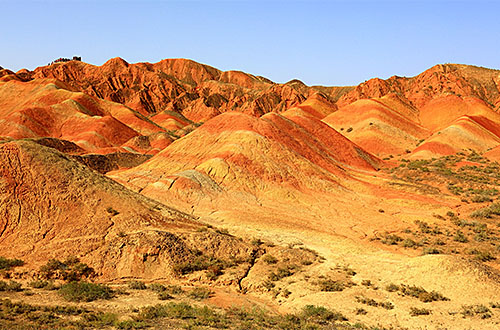
Zhangye was once a center of Buddhism learning, and you can visit Dafo Temple which housed China’s largest reclining (sleeping) Buddha. It is 34.5 meters long and 7 meters high.
Another Buddhist site is Mati Si (Horse Hoof Temple Grottoes) which is a group of Buddha grottoes 65 km south of Zhangye City. Thousands of grottoes are grouped together in seven clusters, and each group of grottoes is no more than a mile or so from another. Man-made tunnels link the various grottoes. The Yugur people inhabited in the area, they are one of the smallest ethnic groups in China at 15,000 people. They are a nomadic people; animal husbandry is prevalent among them. You can visit a local Yugur family to get to know about their daily life.
The rising star in Zhangye is the Danxia National Geopark, nicknamed the “Rainbow Mountains”. These mountains are known for their otherworldly colors that mimic a rainbow painted over the tops of rolling mountains.
5. Jiayuguan (pronunciation: Chia-yu kuan)
Historically, Jiayuguan was the westernmost post of ancient China and subsequently it became a crossroads of cultures. Here is also where the Great Wall ends – or starts, depending on your perspective. Most visitors come here for the Jiayuguan Pass.
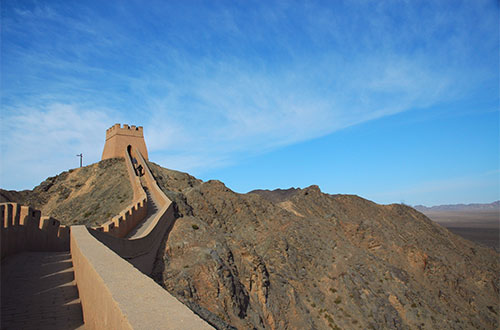
Between the Great Wall and the harsh mountains, this area of Jiayuguan was considered impenetrable, earning it the name of “The First and Greatest Pass Under Heaven”. The pass marks the end of imperial China and the start of the Silk Road connecting China with the West. On the grounds at Jiayuguan Pass is the Jiayuguan Great Wall Museum where you’ll learn a lot about the Great Wall.
Another place of interest in the area is Wei Jin Tombs. There are brick wall paintings from the tombs of the Wei and Western Jin Dynasty (265–420 CE). It is a beautiful underground art gallery, and those paintings display the funeral procedures and daily life of the time.
6. Dunhuang
Historically, Dunhuang was one of the first major trading cities encountered by merchants arriving in China from the west along the Silk Road. It is situated on the crossroads of two major trade routes within the Silk Road network. During the heyday of the Silk Road from the 2nd to the 11th century, it was a center of Buddhist religious and commercial activity, as well as acting as a garrison town protecting the region.
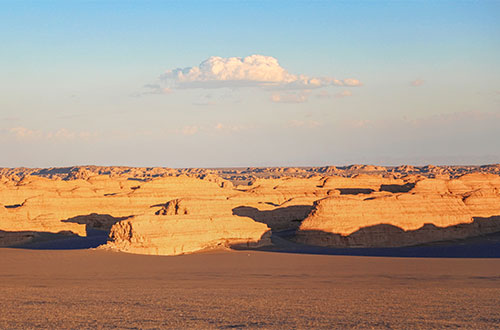
Yardang Landforms
A must see tour attraction is the remarkable Mogao Caves (aka Mogao Grottoes or Caves of the Thousand Buddhas), a collection of 492 caves in the cliffs to the south of the city, containing the largest depositary of historical documents along the Silk Roads. These documents recorded the cultural, religious, social and commercial activity that took place in Dunhuang across the first millennium. You can also find a lot of beautiful murals and sculptures in the caves.
If you travel to or from Jiayuguan like most tourists do, you can visit the Yulin caves en route. They are the sister caves of the Mogao Caves. Forty-three caves have been preserved, housing about 5,000 square meters of murals and more than 270 painted sculptures.
If you are into geology, we recommend the Yardang landforms in the Yadan Geopark, there are more than 5,000 mounds on the desolate Gobi Desert. You can hire a jeep to take you deep in the park.
7. Turpan
Turpan in the Uygur language means "a depression (a place that is lower than the surrounding area)“. The Turpan situated at 155 meters below sea level. It is the second-lowest place on the planet, after the Dead Sea (which is 430 meters below sea level).
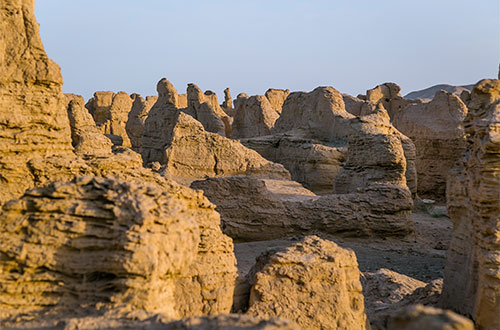
The Ancient City of Jiaohe
With only 16.4 millimeters of precipitation annually, Turpan is one of the most arid places in China. Thanks to the underground irrigation system – Karez Wells – Turpan has been prosperous for over 2,000 years. There are hundreds of wells (or just their remnants), which have been discovered in the area, through which the water from Tianshan enters the underground canals. You can visit one of the Karez Wells and learn how it works. In the Turpan area, there are a number of cities which were once vibrant and prosperous but now sit silent and empty. The Ancient City of Jiaohe and the Ancient City of Gaochang are two of those cities which are open to tourists.
If you want to see the original local Uyghur life and culture, there is no better place than Tuyuq village. It is a small village, 55 km from Turpan city center. It is a living museum of Uyghur history and culture. Its houses and other constructions are mostly in the old traditional style. Also, it is known as a religious Muslim center, where the Uyghur pilgrims go for worship.
8. Urumqi
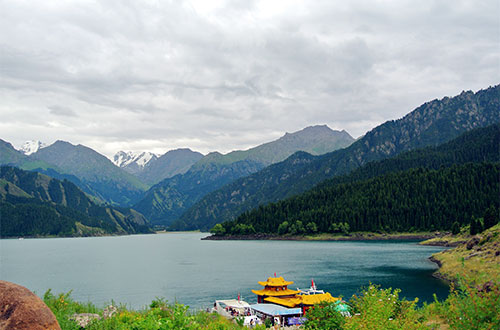
Urumqi in the Mongolian language means “beautiful pasture”. It is located in a fertile belt of oases along the northern slopes of the eastern Tian Shan range. It was a major hub on the Silk Road during China's Tang Dynasty (618-907), having developed a reputation as an important commercial and cultural center during the Qing Dynasty (1644-1912). It is now the largest and capital city of Xinjiang Uyghur Autonomous Region.Three places in Urumqi cannot be missed.
The first place is Tianchi (Heavenly Lake). Covering 4.9 square kilometers, the crescent-shaped water area is known for its beauty. The other two places you should not miss are the Xinjiang Museum and the Grand Bazaar. For the museum, don’t miss their ancient mummy exhibition. Due to the extremely dry conditions of the Gobi Desert, a number of perfectly preserved bodies were found in graves in the area. The Grand Bazaar is the largest bazaar in the world and is filled with local crafts and regional dried fruits.
9. Kuqa/Kuche/Kucha
Lying in the northwestern part of Xinjiang, between the middle ranges of the Tianshan Mountains and the Tarim basin, Kuqa is an oasis surrounded by mountains and the Taklimakan Desert; an important hub on the ancient Silk Road. Known by the name of Qiuci in ancient times, Kuqa is located at a juncture along the ancient Silk Road, linking China to the West. As the meeting point of eastern and western cultures, Qiuci Kingdom progressed in terms of Buddhist architecture, sculptures, paintings, music and literature, and left a profound influence on its neighboring countries and central China. The renowned Buddhist translator Kumarajiva (344-413) was born here. He translated key Buddhist teachings – over two million Chinese characters’ worth – into a form that Chinese worshippers could understand and use.
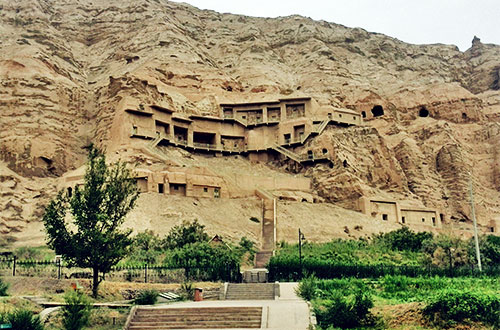
Kizil Grotto
As a symbol of ancient Qiuci culture, Qiuci Grottoes are highlights of a Kuche tour. Qiuci Grottoes are a collective name for over 20 grottoes, scattered in the ancient Kuche area, including Kizil Grotto, Kumtula Grotto, Kizilgahar Grotto and Aai Grotto. More than 700 caves and 20,000 square meters of paintings remain. Kizil Grotto is the biggest and most popular one among them.
Kuche is also bestowed with magnificent and spectacular natural landscapes. One can find the mysterious Tianshan Canyon, 5.5 kilometers long, which is praised as one of the most beautiful canyons of China.
10. Kashgar
Kashgar is situated at the western end of the Tarim Basin in a fertile oasis of loess and alluvial soils watered by the Kashgar River and by several springs. It is surrounded by mountains on three sides: Tianshan Mountains in the north, Kala Kunlun Mountain in the south, and in the west is the famous Pamir Plateau. The historical importance of Kashgar has primarily been linked to its significance as a trading center. The caravans departed for Central Asia, India, Pakistan and ancient Persia (present time Iran) from here.
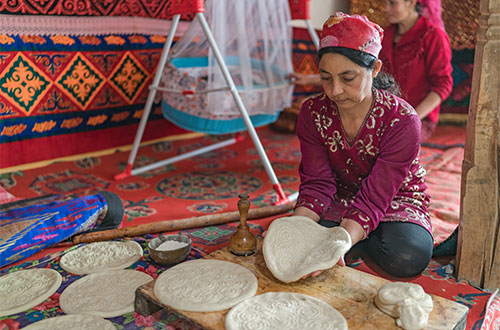
Old Town Market in Kashgar
More than 92% of the population is Uyghur people, so it is a good place to experience the Uyghur lifestyle and culture. You can find Uyghur craftspeople and artisans who still hammer and chisel away as their ancestors did for centuries on the craftsmen street in the old town. If you want to get an idea about what Kashgar looks like, you can watch the movie ‘The Kite Runner’. A big slice of it was shot here. Kashgar was chosen due to the similarity of its landscape to Afghanistan.
Abakh Hoja Tomb is not just a family cemetery; you can see traditional Uyghur architecture and learn the legend of “Fragrant concubines”. Kashgar’s livestock market (aka Sunday market) has the reputation to be one of the largest and most colorful markets in the region.
Kashgar is also bestowed with magnificent and spectacular nature landscapes. The most famous one is Karakul Lake which is 3,600 meters above sea level. The reflection of the snow-capped mountains on its blue water is an amazingly beautiful scene. Another natural wonder is Shipton’s Arch; which is reputedly the highest natural arch in the world. The National Geographic team measured the arch at 365meters (1200 feet) high in 2000. The arch was first reported by British mountaineer Eric Shipton in his 1947 book ‘Mountains of Tartary’. Its real name is Tushuk Tash which means heavenly gate. To get there requires a two hour drive and a one hour hike.

OR
Are you eager to begin your Chinese cultural journey?
Drop us a line and we will promptly connect you with our leading China expert!
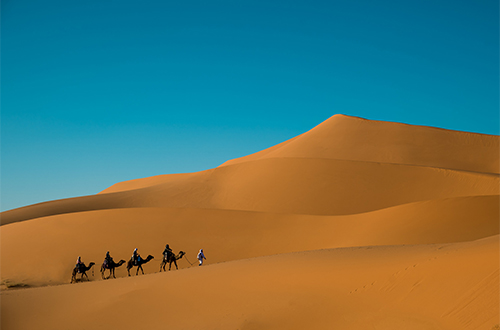 Silk Road
Silk Road 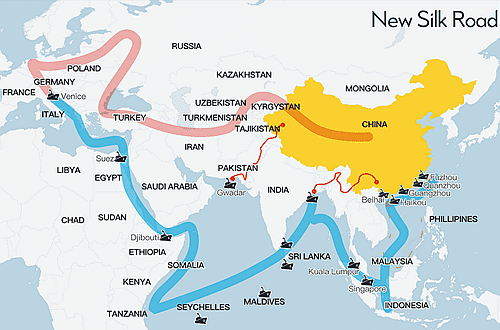 New Silk Road
New Silk Road 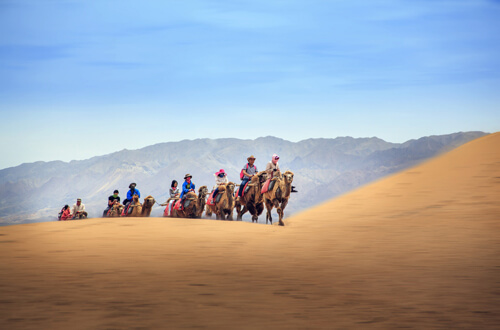 Silk Road in a Nutshell from Lanzhou to Dunhuang
Silk Road in a Nutshell from Lanzhou to Dunhuang  Silk Road Photography Tour
Silk Road Photography Tour